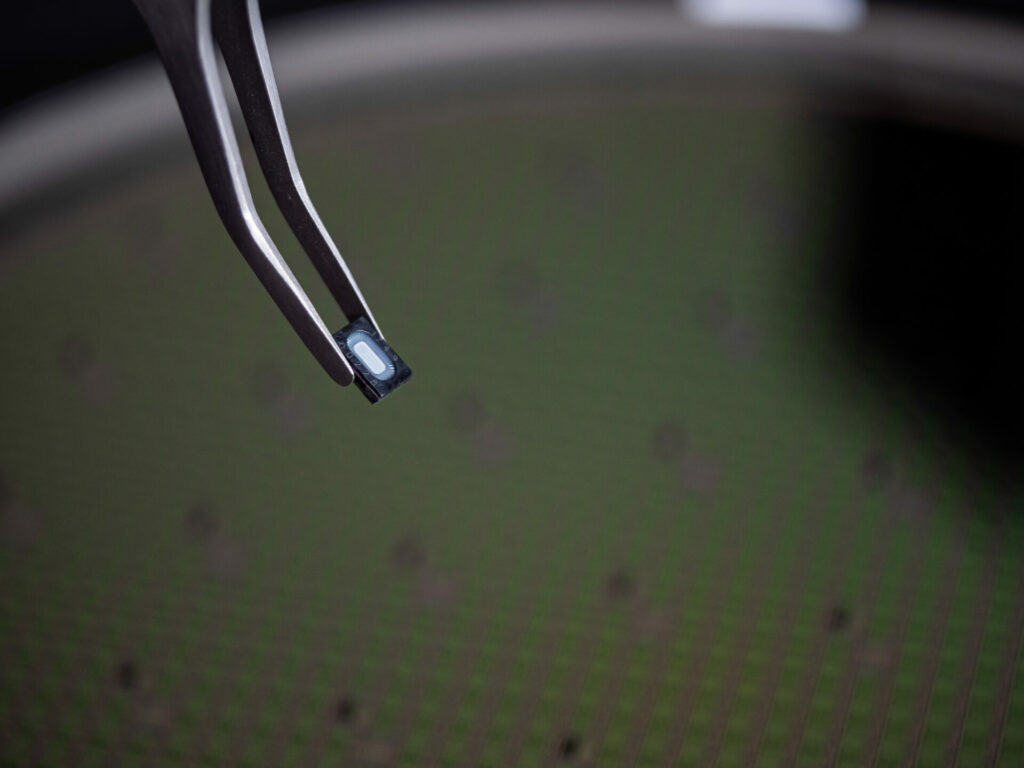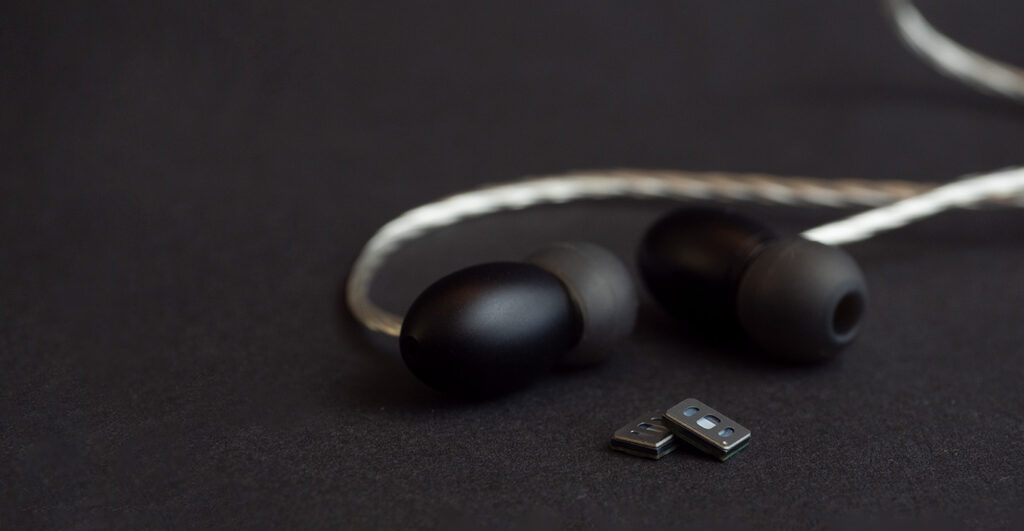At the end of September 2023, USound announced that it had been selected as a loudspeaker supplier by NordicNeuroLab for the production of MRI-compatible headphones. Up until now, such headphones were of the pneumatic type, where the loudspeaker had to be placed outside of the actual MRI machine, with long rubber hoses connecting to the actual headphone. However, with USound’s technology, it is possible to place the loudspeakers directly inside the MRI machine, as they do not disturb the magnetic field.
What is an MRI?
Magnetic Resonance Imaging (MRI) is a non-invasive imaging technique primarily used for medical diagnostics. It works on the principle of nuclear magnetic spin resonance, where atomic nuclei are excited via strong magnetic fields and their resulting emitted energy is observed. This can be used to create three-dimensional images of a live body without harming the patient. Compared to a more common X-ray scan, MRI scans can distinguish better between different types of soft tissue. It also does not use ionizing radiation, unlike an X-ray.
The global MRI market
According to T. Omdahl, CEO of NordicNeuroLab, there are approximately 50.000 to 60.000 MRI machines in use worldwide, with older machines constantly being phased out or refitted and around 5.000 being produced every year. Although MRIs are used less often than X-rays, they are a common medical imaging technique, with over 10 million people undergoing MRI screenings every year. Austria, the country where USound’s headquarters are based, has had the largest number of examinations per 1000 people, according to recent statistics: about 1 in 7 Austrians underwent an MRI scan in 2019, 14,8% to be exact. This is followed by Germany (14,5%) and the United States (12,8%).
The use of headphones in MRI
During an MRI scan, the magnetic field shifts thousands of times per second, causing the coils that generate the field to vibrate audibly. This results in extremely loud sound pressure levels, reaching up to 130 dB. To protect their hearing, patients must wear hearing protection, typically noise-isolating headphones.

Additionally, headphones are essential for certain scans, such as functional MRI (fMRI), which may require delivering specific auditory cues to the patient to measure brain activity in response to sound. Even for typical routine examinations, it has been shown that patients are more relaxed when able to listen to music during the scan, resulting in fewer voids or faulty results. Relaxed patients also move less, which improves image quality.
Passive noise isolation also has limits, as the hearing protection can only get so heavy before it becomes too cumbersome to use. The use of active noise reduction can help further lower the noise reaching the patient, but requires loudspeakers close to the patient’s ear.
Lastly, headphones also allow medical professionals to communicate with the patient.
What makes a headphone MRI-compatible?
Other than the trivial requirement of having to fit on a variety of heads, MRI headphones have two main requirements:
- High degree of noise isolation
- Constraints in the choice of materials

The required noise isolation is achieved via passive means (high-density materials and high clamping force, to ensure a reliable seal against the patient’s head) and active means (through active noise reduction).
The more unique aspect is in the limited selection of materials available to design the headphones: MRI machines use very strong magnetic fields to ensure a high signal-to-noise ratio (up to 7 Tesla are common in medical MRIs). Objects containing ferromagnetic materials will affect the orientation of the magnetic field, causing severe image distortion. But more importantly, they can be rapidly propelled towards the opening of the MRI scanner and heat up due to induced currents, both of which pose a severe danger to the patient.
That is why anyone entering the magnetically shielded MRI room has to remove their belts, jewelry and other metallic items, and why electrodynamic headphones, which contain permanent magnets, cannot be used inside MRI machines.
Types of MRI headphones
To address these issues, different construction types can be used for MRI-compatible headphones:
- Pneumatic headphones
- Electrostatic speakers
- MEMS- speakers
Pneumatic headphones solve the issue in a brute force way, by separating the loudspeaker from the actual headphone. The loudspeakers are placed outside the magnetically shielded room containing the MRI machine, and long rubber hoses are used to guide the sound from the speaker to the earcups. Although this is comparatively simple as the loudspeaker is of a conventional electrodynamic type, it presents a hard challenge for the acoustics, as the rubber tubes will be multiple meters in length, causing resonances in the full audible spectrum and poor sound quality.
Electrostatic headphones replace the electrodynamic transducer with an entirely different type of loudspeaker that does not contain ferromagnetic materials. They offer great sound quality, but as the electrostatic force is much weaker than the Lorentz force (which drives conventional loudspeakers), an electrostatic transducer requires significantly higher voltages (over 1 kV) than a traditional electrodynamic transducer, and therefore more effort for amplification and high-voltage certification, which drives up the price significantly.
MEMS speaker-based headphones: Since USound MEMS speakers do not rely on ferromagnetic materials to produce force, they too can be used for MRI headphones. This also means that the loudspeaker can be placed inside the earcup – unlike with pneumatic headphones – which is highly beneficial for active noise reduction as it reduces the time-of-flight between the loudspeaker and the ear.
MEMS-headphones also do not require high-voltage electronics like electrostatic headphones do and, due to the mass manufacturability, they offer a more cost-efficient solution than electrostatic speakers. USound offers a special line of speakers featuring a plastic front cover, thereby removing all ferromagnetic materials from the design and making them the ideal choice for designing your MRI headphones.
Why USound MEMS speakers
USound is a fast-growing company that develops state-of-the-art audio solutions. Our MEMS speakers are selected for their small size, excellent acoustic performance, and design flexibility. You can explore our solutions on our product page and find relevant technical documentation on the designated page.
Interested in our audio solutions? Drop us an email and one of our experts will assist you.
This article was originally written by Konstantin Davy and Marieleni Perpiraki, former team members, and has been updated on 7.04.2025 by our editorial team to reflect current best practices.


